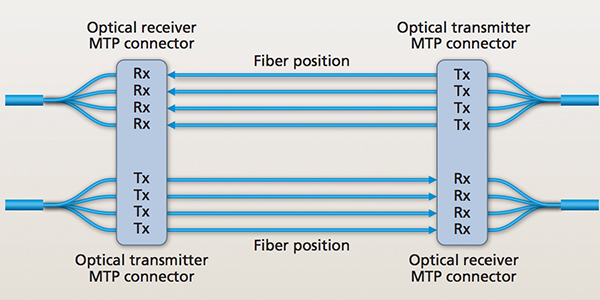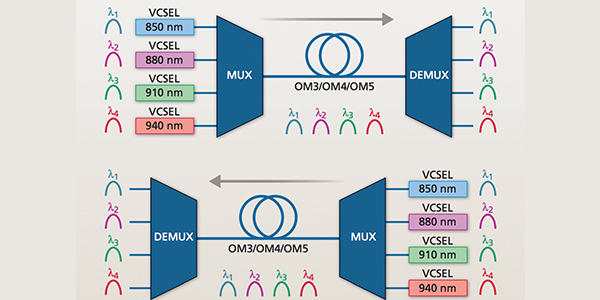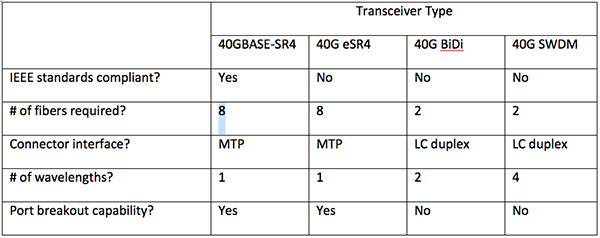In October 2014, the Telecommunications Industry Association (TIA) initiated a work group to develop guidance for a wideband multimode fiber (WB MMF) 50/125 µm fiber standard to support short wavelength division multiplexing (SWDM) transmission. The TIA-492AAAE detailed fiber standard was published in June 2016. The designation OM5 was approved by the ISO/IEC JT1/SC25 in October 2016. However, to date there have been very few OM5 deployments. Why is this? And why was OM5 created in the first place? What does the future hold; will OM5 ever catch on?
In local area networks (LANs) and in data centers (DCs) MMF remains the dominant fiber type used because it enables the lowest link cost (defined as the cost of the connectivity, and optical transceivers) for short distances. To understand the circumstances around why OM5 was born, it is necessary to understand a few things about optical transceivers, and the standards that govern them.
We need to understand the distinction between standards-compliant transceivers, and proprietary /MSA transceivers. Standards-compliant transceivers in an Ethernet context work with optical transmit, receive guidance and have been ratified as part of an IEEE 802.3 Ethernet standard. Proprietary / MSA transceivers on the other hand are not part of the IEEE standard – either because the proposed physical media dependent (PMD) technology did not get enough member votes to be included in the standard, or because the transceiver utilizes a technology that was never offered to become part of an open industry standard. Various manufacturers have developed MSA transceivers (Multi-Source Agreement Transceivers) after establishing special, mutual agreements to ensure the products’ constant compatibility. Thus, they fulfill de facto standards, but do not meet official industry standards such as IEEE. The distinction between IEEE standards-compliant transceivers and proprietary transceivers is important because of the multiple transceiver types available in the market, with many proprietary designs.






